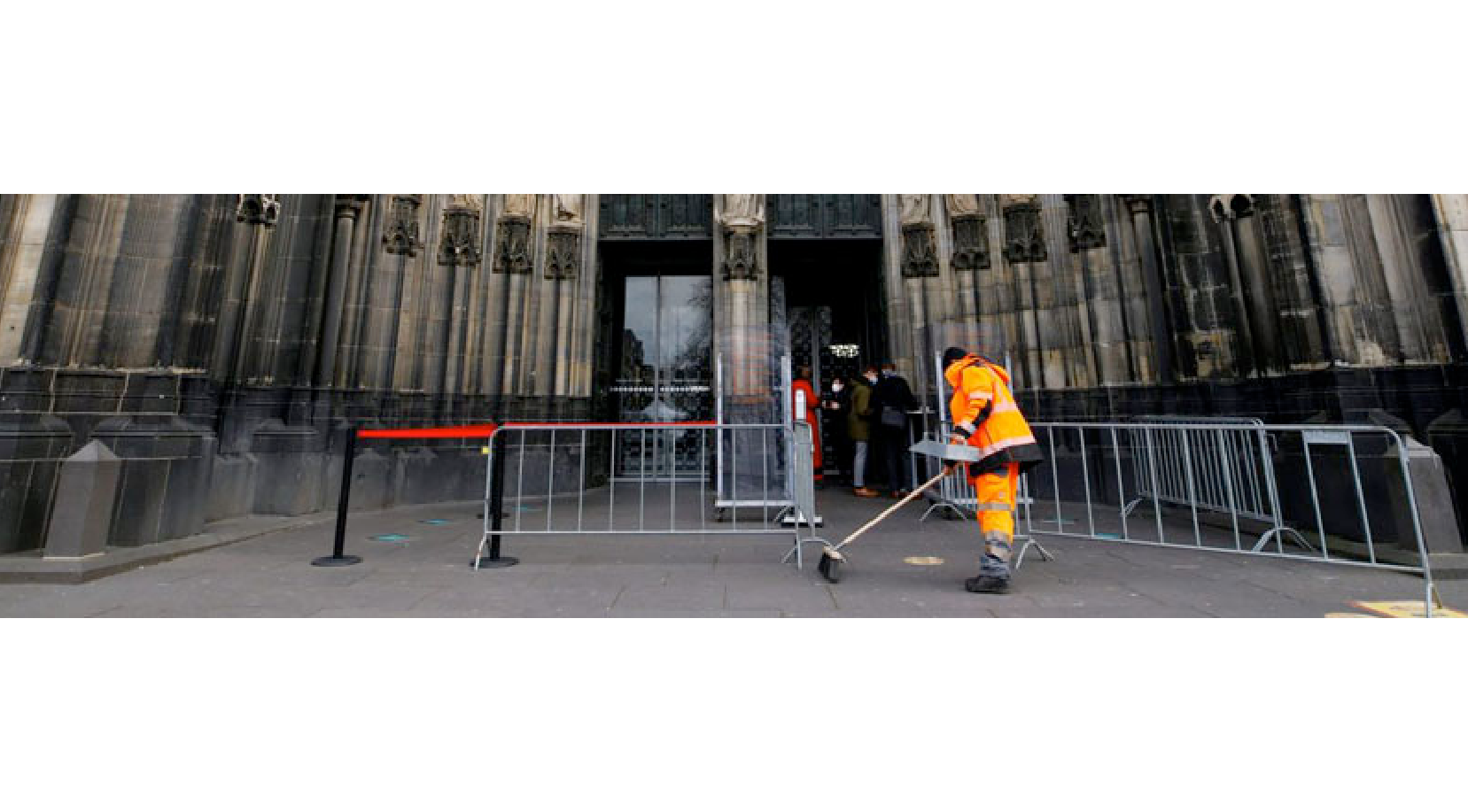(ZENIT News – Caffe Storia / Rome, 04.06.2024).- Saint Boniface’s tomb, in what was the extraordinary Abbey of Fulda, today a Cathedral, could be an ingenious caricature: the Apostle of the Germans, even before they could call themselves such, is represented in the act of lifting the cover of his sarcophagus to take a look outside. In the intentions of the artist, a tireless shepherd of his flock, but today, perhaps, intrigued by the singular spiritual path undertaken by Germany.
That much remains to be done, not only in the transalpine region, is an opinion shared by Monsignor Georg Bätzing, Bishop of Limbourg and President of the German Episcopal Conference: missionary land, cradle of Ambrose of Milan, Albert the Great, Hildegard of Bingen, Edith Stein and Benedict XVI, among others, today is a “mission land. ”We live in a mission land when we realize that less than half of German citizens continue belonging to Christian Confessions,” said Bätzing, in an interview for Leben jetzt. However, the other half simply has no faith or doesn’t ask itself questions and, in this sense, I think we have to work much more.”
To tell the truth, the definition isn’t new, not even for the German context. Germany has become a mission land for the Christian Churches,” reported the digital version of Die Welt newspaper 13 years ago, quoting Bodo Flaig, Managing Director of Heidelberg’s Sinus Institute of social and market research. And to think that the results of the survey, published at the time in Christ und Welt, revealed that 59% of Germans interviewed continued describing themselves as religious, but only 33% felt linked to a Church. Even fewer attended religious services regularly (21%) and prayed daily (10%).The German newspaper headlined: “A Million Germans Want to Leave the Church” (Catholic and Protestant).
Thirteen years later, a million fewer Christians seems a mirage. If at the beginning of the 90’s Catholics alone surpassed 28 million, today they don’t reach 21 million: seven million fewer believers in 30 years. At present, Catholics represent 24.8% of the population in Germany, with the lowest incidences in the northern and eastern Länder, and the highest in those of the south, such as Bavaria and Sarre, where Catholics constitute 43.5% and 50.8% of the population, respectively.
According to the latest data published by the German Episcopal Conference, referring to 2022, in the country there are officially some 20.9 million Catholics and 19.2 million Evangelicals (that is, registered in the respective Churches, in virtue of the Kirchensteuer, the ecclesiastical tax. In total, there are fewer than 45 million Christians, including those belonging to other Evangelical Churches (291,000), Orthodox Churches (3.85 million) and other Christian Churches, such as the Coptic Church (573,000). The German population as a whole is Christian — 52.2% and of other Confessions (or none) — 47.8%.
Once the disease is diagnosed, it’s more complex to identify the cure. As is known, a part of the Church in Germany believes it has found the cure between the lights and shades of the controversial German Synodal Way, up to now without appreciable results. It’s complex, in fact, to interpret the causes of the crisis, sometimes opposed: the general secularization of many societies, the indignant reaction to the power and sexual abuses, but also the disaffection for a Church that is perceived ever less as a credible alternative — or even as the only alternative — to the worldly logic.
A few years later, in 2000 and 2004, the German Episcopate addressed in two documents the perspectives of the mission of the universal Church and of the Church in Germany, “integral part of the mission of God, [. . . ] of which the Church must give witness in our country and the whole world.” However, the new energies could come rather from the exterior than from the interior.
It’s interesting to point out that one of the few dynamics that counteract the sinking of Christianity in Germany is the affluence of the faithful from abroad, originating, precisely, from the once called “mission lands.” There are already 3.5 million foreign Catholics in Germany, many more if one takes into account the predictably high number of those registered in the Kirchensteuer, and what’s more, increasing. Poles, Italians, Croats, Austrians and Rumanians, a vital presence, not yet fully included in the Church in Germany, but that, if the contagion of secularization allows it, represents the future of many ecclesial contexts, not only in Germany.
In the race to design new ways of missionary life, any answer can only come from the full and equitable participation of each Church. Whereas at the financial level the propulsion continues being “Western,” Christianity’s center of gravity has moved to the global South, as regards the number of vocations to the priestly and religious life, as well as the experiences of belonging to the Church. That is, in those more or less veiled “backward” context, including from the ecclesial point of view.
La France, pays de mission? [France, mission land?] wondered Henri Godin and Yvan Daniel, at the height of the Second World War and, with France occupied by the Nazis, at the time secularism seemed the least dangerous of the possible threats, but only at first glance.
If then the frontier of the new evangelization was situated among the multiple marginalizations of the suburbs, today faith is torn from the colossal suburb of marginalization — as big as the so-called West.
Translation of the Italian original into Spanish by ZENIT’s Editorial Director and, into English, by Virginia M. Forrester.
Thank you for reading our content. If you would like to receive ZENIT’s daily e-mail news, you can subscribe for free through this link.



